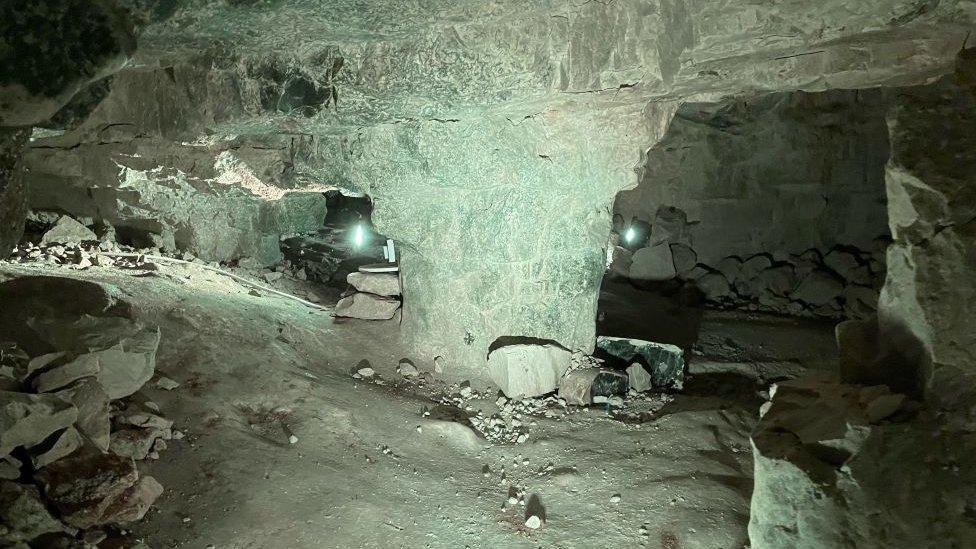Visitors given a close-up view of castle repairs
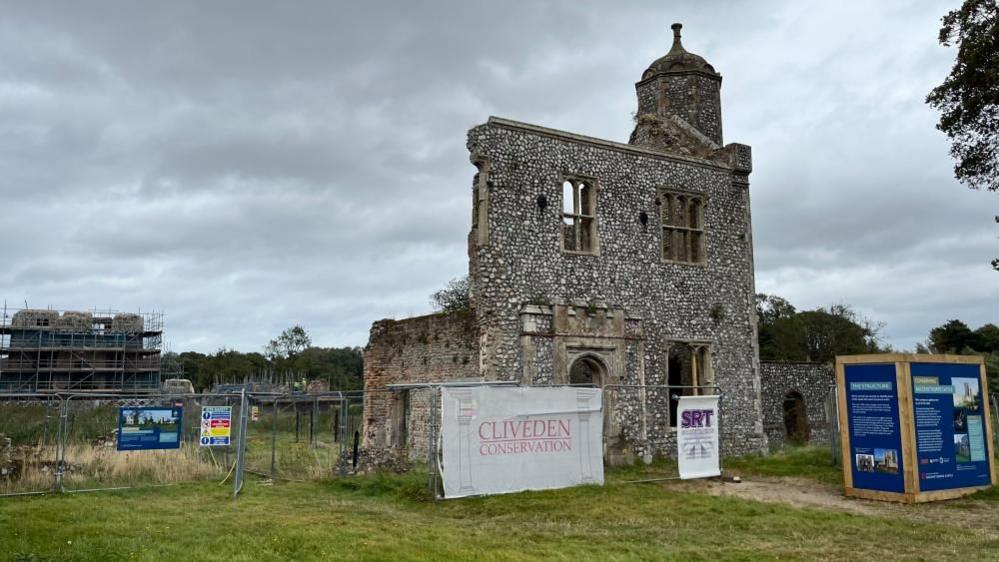
Baconsthorpe Castle should reopen to the public in late 2024 after being closed for safety reasons
- Published
Conservation work on a 15th Century castle has been shown to the public, two years after the site closed on safety grounds.
Baconsthorpe Castle, near Holt, Norfolk, was the home of the Heydon family, who built their wealth on the county's medieval wool trade.
However, successive generations failed to maintain the business and the castle fell into ruins, with some masonry sold off to pay debts.
Owned by English Heritage, the site was closed in 2022 because falling masonry posed a risk to visitors.
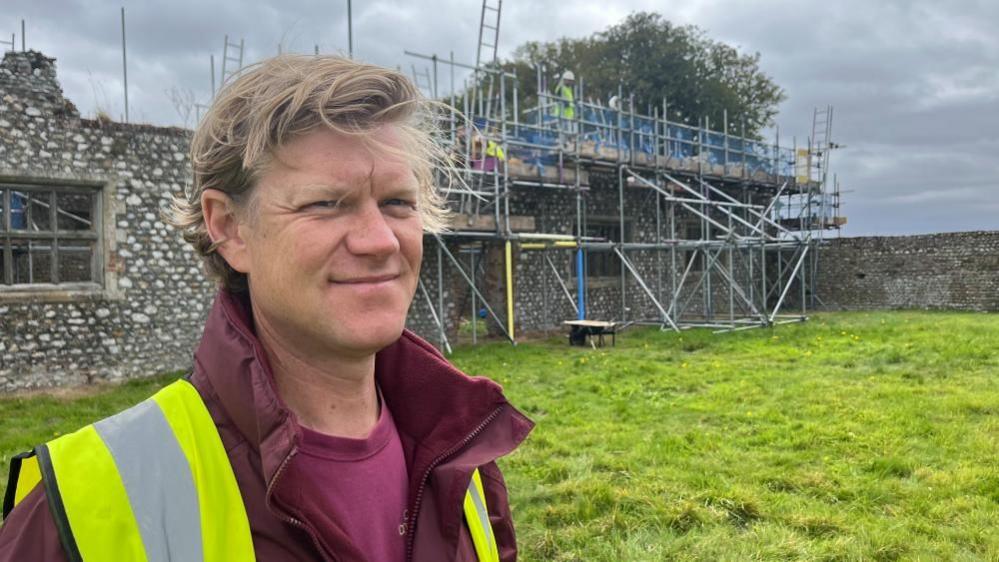
Lewis Proudfoot, of Cliveden Conservation, said it was a large project
The work, costing around £700,000, is expected to be completed by the end of the year, and the site will then reopen to the public.
Architects and conservation specialists have been using lime mortar and other techniques to stabilise the flint walls.
Some of them have facings of rough masonry, exposed when flint cladding was stripped off and sold as architectural salvage when the owners tried to clear debts.
Lewis Proudfoot, managing director of Cliveden Conservation, said: "We are undertaking quite a large project to stabilise and consolidate the ruins.
"We are currently working on the textile factory where we are removing the vegetation and loose material, and consolidating all the heads and cappings with lime mortar, replacing loose flints.
"We've got the public here on an open day, which is great to see, and showing them [the work] up close and looking at some of the medieval flintwork that we are hoping to conserve for some years to come.
"This is a really good example of a building that was built to demonstrate wealth and status.
"There's stone vaulting. There's really nice work and finishes. It's amazing they're still here, centuries later."
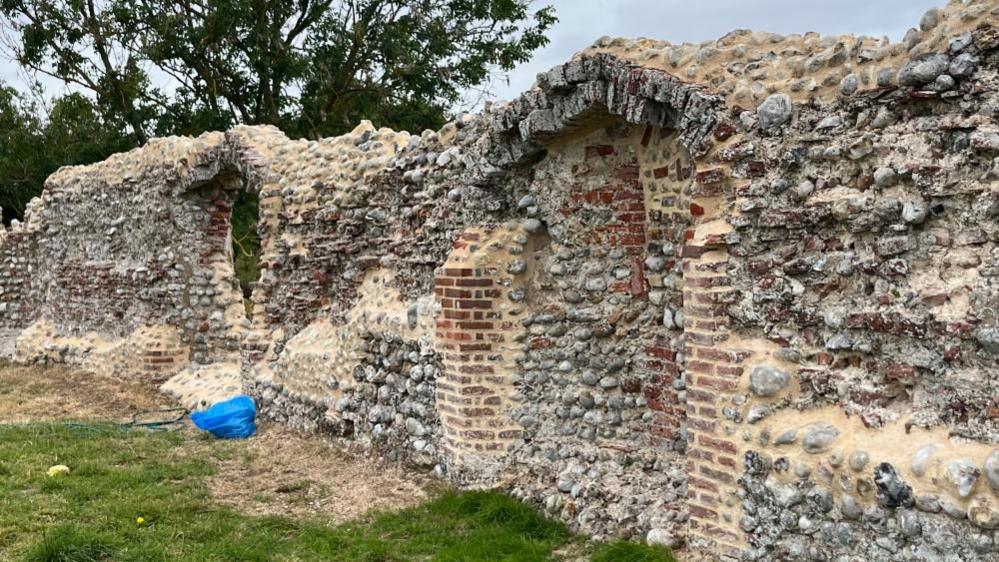
Repairs have been made to stabilise the flint walls
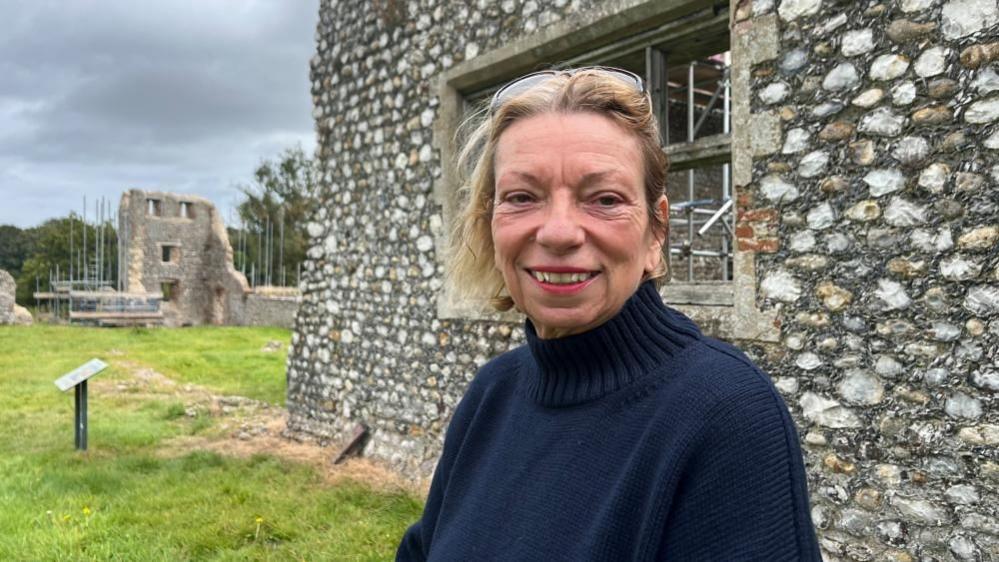
Jo Brannigan believes parts of her house were built from bits stripped from the castle
Jo Brannigan believes parts of her house were built using artefacts stripped from the castle as the owners sold them to pay debts.
"I think quite a lot of the houses in the village were built from cobbles and flint that were taken from the castle when it became derelict," she said.
"We're very much newcomers to the village but everybody wants to tell us how wonderful it was when this used to be more of a community area and there used to be outdoor plays and performances held here, so we are very excited about seeing it come back to life again and being open to the public."

The flint would have been a display of wealth
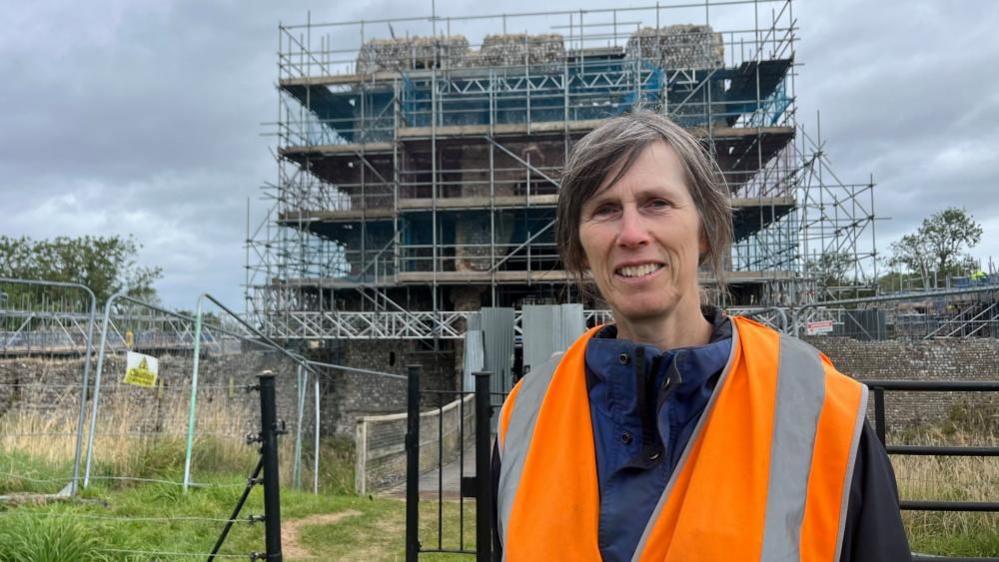
Architect Ruth Brennan explained why concrete was being used rather than oak
Architect Ruth Brennan admitted some of the repairs would stand out, but using concrete lintels to replace oak was done for good reason.
"Luckily, because of the wear and exposure of the core materials we've got a pretty good idea of how it was built, so we can try to match it where we can.
"What we try to do is make repairs look honest and obvious. We didn't use oak here because it tends to rot and it's a very exposed site.
"Concrete doesn't move, it's grey so it does match the flint, and in time it will weather down so it won't be quite so obvious."
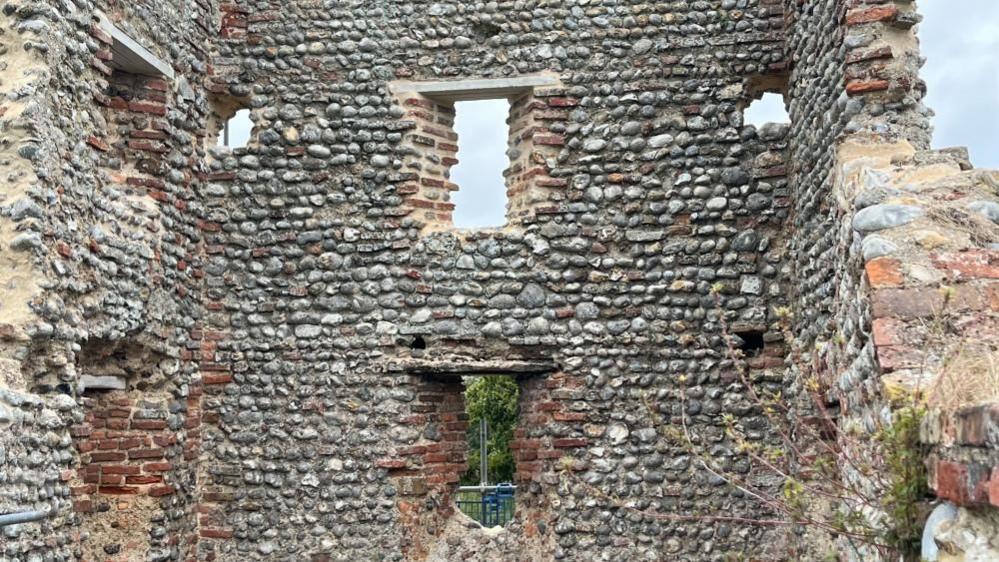
The conservation project has seen rotten oak lintels replaced with concrete
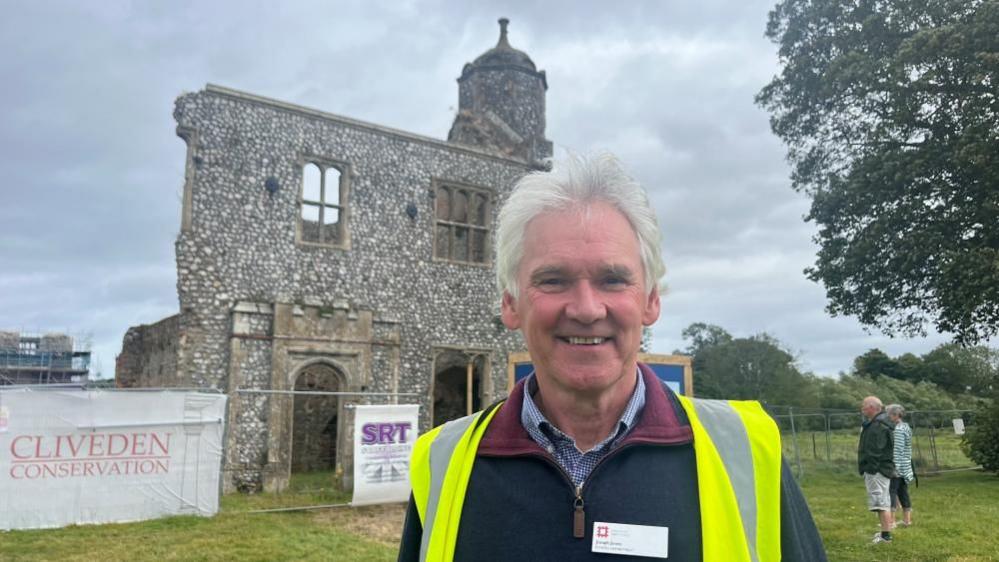
Joseph James, from English Heritage, said it was important to get Baconsthorpe Castle reopened to the public
Joseph James, of English Heritage, said: "The works themselves are about half a million, plus scaffolding, surveys and architects, so it's about £700,000 we are spending on Baconsthorpe.
"But it's vital. We have to save these places. We have a duty of care not only to the monument itself but the craft and skills of the stonemasons, to keep it all alive.
"We have to look after 400 monuments across England; 300 of them are free sites, such as Baconsthorpe.
"They are great assets to the community; great picnic and walking spots, and that little touch of history in your backyard."
Follow Norfolk news on BBC Sounds, Facebook, external, Instagram, external and X, external.
Related topics
Related stories
- Published30 May 2024
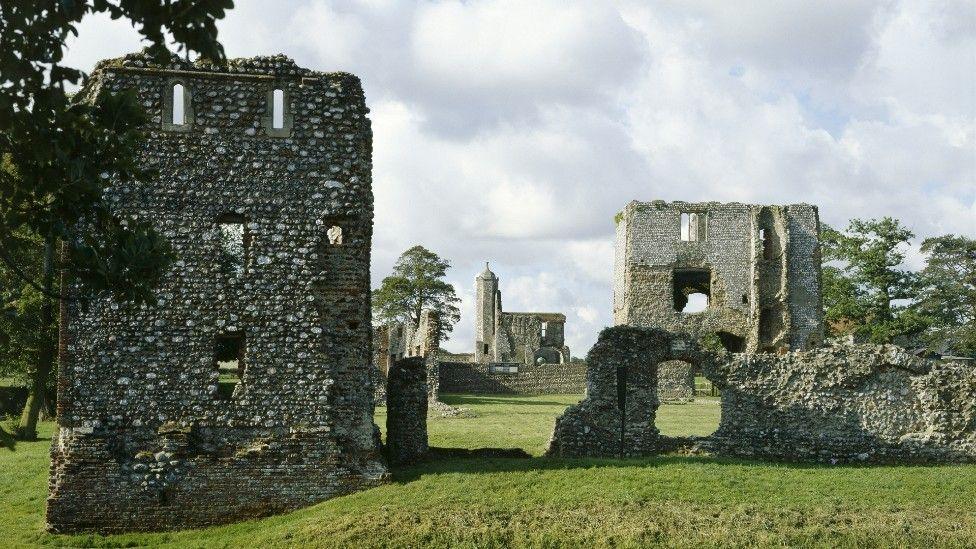
- Published27 April 2024
